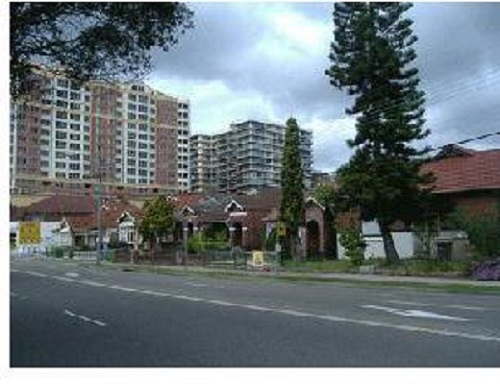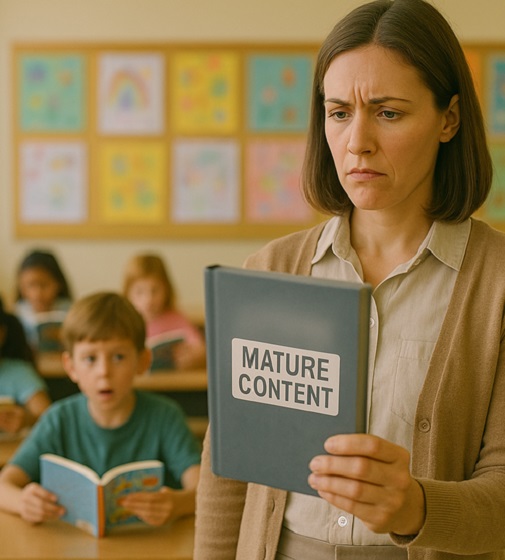Economy
The 15-Minute City: An extraordinarily bad idea

From the Frontier Centre for Public Policy
” the average resident of the New York urban area—the closest thing to a 15-minute city in the U.S. or Canada—can reach at least 21 times as many jobs in a 20-minute auto drive as in a 20-minute walk. The same will be true of other economic opportunities. “
The latest urban planning fad to sweep across Canada is the 15-minute city, which proposes to redesign cities so that all urban residents live within an easy, 15-minute walk of schools, retailers, restaurants, entertainment, and other essentials of modern life. This is supposed to simultaneously reduce greenhouse gas emissions while it increases our quality of life.
Some think it is a conspiracy. Others insist it is not. Conspiracy or not, the only way to have true 15-minute cities would be to drastically change Canadian lifestyles.
Fifteen-minute cities mean a lot more people living in multifamily housing and fewer in single-family housing. It means most food shopping would be done in high-priced, limited-selection grocery stores. There is no way that Costcos or even large supermarkets can fit into 15-minute cities; to survive, these stores need a lot more customers than could live within a 15-minute walk from their front doors.
Most of the benefits claimed for 15-minute cities are wrong. Proponents claim they would be more affordable, but high-density, multi-story housing costs two to five times as much, per square foot, as single-family homes. Packing people into four- and five-story apartment buildings would require cutting average dwelling sizes at least in half to make them anywhere close to affordable.
Proponents also claim 15-minute cities would save energy and reduce greenhouse gases and other pollutants. But let’s be honest: people aren’t going to give up their cars or stop going to Costco.
Admittedly, the U.S. Department of Energy says that people living in high-density cities do drive a little less than people in low-density areas. But it also says that there is a lot more congestion in high-density cities. Since cars use more energy in slower traffic, high-density cities use more energy (and therefore emit more greenhouse gases) per capita than low-density areas.
Proponents also claim that 15-minute cities will be more equitable. Yet, before about 1890, most Canadian cities were 15-minute cities. Most people in these cities lived in crushing poverty and there were huge disparities between the rich and the poor, with only a small middle-class in between.
What changed these cities was the mass-produced automobile. The Model T Ford democratized mobility, allowing more people to escape the dense cities to find better housing, better jobs, access to lower-cost consumer goods, and a wider range of social and recreation opportunities.
The University of Minnesota Accessibility Observatory calculates that the average resident of the New York urban area—the closest thing to a 15-minute city in the U.S. or Canada—can reach at least 21 times as many jobs in a 20-minute auto drive as in a 20-minute walk. The same will be true of other economic opportunities. Eliminating the automobile, which is the goal of the 15-minute city, would eliminate those economic benefits.
We had this same debate 50-some years ago when urban skies were polluted with carbon monoxide, smog, and other toxic automobile emissions. Some people advocated policies that would force people to drive less. Others advocated new technologies that would reduce the air pollution coming from autos and trucks.
Today, total automotive air pollution has been reduced by about 90 percent. All this improvement came from cleaner cars: new cars today pollute only about 1 percent as much as cars made in 1970. None of this improvement came from anti-automobile policies, as Canadians drive far more miles today than they did 50 years ago.
If anything, policies aimed at reducing driving made pollution worse as one of those policies was to increase traffic congestion to get people out of their cars. Yet, as noted above, cars actually pollute more in congested traffic.
Anti-automobile policies today, including 15-minute cities, spending billions on rail transit lines that carry only a small percentage of urban travel, and converting general street lanes into exclusive bike lanes, are going to have the same effect.
People who care about the planet should demand policies that actually work and not ones that are based on urban planning fantasies and fads. Instead of attempting to drastically change Canadian lifestyles, that means making cars that are cleaner and more fuel-efficient so that the driving we do has a lower environmental impact. The 15-minute city may not be a conspiracy, but it is still an extraordinarily bad idea.
Randal O’Toole is a transportation policy analyst and author of Building 21 st Century Transit Systems for Canadian Cities, an upcoming report published by the Frontier Centre for Public Policy.
Watch Randal on Leaders on the Frontier here.
Business
Trump confirms 35% tariff on Canada, warns more could come

Quick Hit:
President Trump on Thursday confirmed a sweeping new 35% tariff on Canadian imports starting August 1, citing Canada’s failure to curb fentanyl trafficking and retaliatory trade actions.
Key Details:
- In a letter to Canadian Prime Minister Mark Carney, Trump said the new 35% levy is in response to Canada’s “financial retaliation” and its inability to stop fentanyl from reaching the U.S.
- Trump emphasized that Canadian businesses that relocate manufacturing to the U.S. will be exempt and promised expedited approvals for such moves.
- The administration has already notified 23 countries of impending tariffs following the expiration of a 90-day negotiation window under Trump’s “Liberation Day” trade policy.
Diving Deeper:
President Trump escalated his tariff strategy on Thursday, formally announcing a 35% duty on all Canadian imports effective August 1. The move follows what Trump described as a breakdown in trade cooperation and a failure by Canada to address its role in the U.S. fentanyl crisis.
“It is a Great Honor for me to send you this letter in that it demonstrates the strength and commitment of our Trading Relationship,” Trump wrote to Prime Minister Mark Carney. He added that the tariff response comes after Canada “financially retaliated” against the U.S. rather than working to resolve the flow of fentanyl across the northern border.
Trump’s letter made clear the tariff will apply broadly, separate from any existing sector-specific levies, and included a warning that “goods transshipped to evade this higher Tariff will be subject to that higher Tariff.” The president also hinted that further retaliation from Canada could push rates even higher.
However, Trump left the door open for possible revisions. “If Canada works with me to stop the flow of Fentanyl, we will, perhaps, consider an adjustment to this letter,” he said, adding that tariffs “may be modified, upward or downward, depending on our relationship.”
Canadian companies that move operations to the U.S. would be exempt, Trump said, noting his administration “will do everything possible to get approvals quickly, professionally, and routinely — In other words, in a matter of weeks.”
The U.S. traded over $762 billion in goods with Canada in 2024, with a trade deficit of $63.3 billion, a figure Trump called a “major threat” to both the economy and national security.
Speaking with NBC News on Thursday, Trump suggested even broader tariff hikes are coming, floating the idea of a 15% or 20% blanket rate on all imports. “We’re just going to say all of the remaining countries are going to pay,” he told Meet the Press moderator Kristen Welker, adding that “the tariffs have been very well-received” and noting that the stock market had hit new highs that day.
The Canadian announcement is part of a broader global tariff rollout. In recent days, Trump has notified at least 23 countries of new levies and revealed a separate 50% tariff on copper imports.
“Not everybody has to get a letter,” Trump said when asked if other leaders would be formally notified. “You know that. We’re just setting our tariffs.”
Business
UN’s ‘Plastics Treaty’ Sports A Junk Science Wrapper


From the Daily Caller News Foundation
By Craig Rucker
According to a study in Science Advances, over 90% of ocean plastic comes from just 10 rivers, eight of which are in Asia. The United States, by contrast, contributes less than 1%. Yet Pew treats all nations as equally responsible, promoting one-size-fits-all policies that fail to address the real source of the issue.
Just as people were beginning to breathe a sigh of relief thanks to the Trump administration’s rollback of onerous climate policies, the United Nations is set to finalize a legally binding Global Plastics Treaty by the end of the year that will impose new regulations, and, ultimately higher costs, on one of the world’s most widely used products.
Plastics – derived from petroleum – are found in everything from water bottles, tea bags, and food packaging to syringes, IV tubes, prosthetics, and underground water pipes. In justifying the goal of its treaty to regulate “the entire life cycle of plastic – from upstream production to downstream waste,” the U.N. has put a bull’s eye on plastic waste. “An estimated 18 to 20 percent of global plastic waste ends up in the ocean,” the UN says.
As delegates from over 170 countries prepare for the final round of negotiations in Geneva next month, debate is intensifying over the future of plastic production, regulation, and innovation. With proposals ranging from sweeping bans on single-use plastics to caps on virgin plastic output, policymakers are increasingly citing the 2020 Pew Charitable Trusts report, Breaking the Plastic Wave, as one of the primary justifications.
But many of the dire warnings made in this report, if scrutinized, ring as hollow as an empty PET soda bottle. Indeed, a closer look reveals Pew’s report is less a roadmap to progress than a glossy piece of junk science propaganda—built on false assumptions and misguided solutions.
Pew’s core claim is dire: without urgent global action, plastic entering the oceans will triple by 2040. But this alarmist forecast glosses over a fundamental fact—plastic pollution is not a global problem in equal measure. According to a study in Science Advances, over 90% of ocean plastic comes from just 10 rivers, eight of which are in Asia. The United States, by contrast, contributes less than 1%. Yet Pew treats all nations as equally responsible, promoting one-size-fits-all policies that fail to address the real source of the issue.
This blind spot has serious consequences. Pew’s solutions—cutting plastic production, phasing out single-use items, and implementing rigid global regulations—miss the mark entirely. Banning straws in the U.S. or taxing packaging in Europe won’t stop waste from being dumped into rivers in countries with little or no waste infrastructure. Policies targeting Western consumption don’t solve the problem—they simply shift it or, worse, stifle useful innovation.
The real tragedy isn’t plastic itself, but the mismanagement of plastic waste—and the regulatory stranglehold that blocks better solutions. In many countries, recycling is a government-run monopoly with little incentive to innovate. Meanwhile, private-sector entrepreneurs working on advanced recycling, biodegradable materials, and AI-powered sorting systems face burdensome red tape and market distortion.
Pew pays lip service to innovation but ultimately favors centralized planning and control. That’s a mistake. Time and again, it’s been technology—not top-down mandates—that has delivered environmental breakthroughs.
What the world needs is not another top-down, bureaucratic report like Pew’s, but an open dialogue among experts, entrepreneurs, and the public where new ideas can flourish. Imagine small-scale pyrolysis units that convert waste into fuel in remote villages, or decentralized recycling centers that empower informal waste collectors. These ideas are already in development—but they’re being sidelined by policymakers fixated on bans and quotas.
Worse still, efforts to demonize plastic often ignore its benefits. Plastic is lightweight, durable, and often more environmentally efficient than alternatives like glass or aluminum. The problem isn’t the material—it’s how it has been managed after its use. That’s a “systems” failure, not a material flaw.
Breaking the Plastic Wave champions a top-down, bureaucratic vision that limits choice, discourages private innovation, and rewards entrenched interests under the guise of environmentalism. Many of the groups calling for bans are also lobbying for subsidies and regulatory frameworks that benefit their own agendas—while pushing out disruptive newcomers.
With the UN expected to finalize the treaty by early 2026, nations will have to face the question of ratification. Even if the Trump White House refuses to sign the treaty – which is likely – ordinary Americans could still feel the sting of this ill-advised scheme. Manufacturers of life-saving plastic medical devices, for example, are part of a network of global suppliers. Companies located in countries that ratify the treaty will have no choice but to pass the higher costs along, and Americans will not be spared.
Ultimately, the marketplace of ideas—not the offices of policy NGOs—will deliver the solutions we need. It’s time to break the wave of junk science—not ride it.
Craig Rucker is president of the Committee For A Constructive Tomorrow (www.CFACT.org).
-

 Business2 days ago
Business2 days agoWEF-linked Linda Yaccarino to step down as CEO of X
-

 Automotive2 days ago
Automotive2 days agoAmerica’s EV Industry Must Now Compete On A Level Playing Field
-

 Business2 days ago
Business2 days ago‘Experts’ Warned Free Markets Would Ruin Argentina — Looks Like They Were Dead Wrong
-

 Alberta1 day ago
Alberta1 day agoAlberta school boards required to meet new standards for school library materials with regard to sexual content
-

 International2 days ago
International2 days agoSecret Service suspends six agents nearly a year after Trump assassination attempt
-

 Business1 day ago
Business1 day agoCarney government should recognize that private sector drives Canada’s economy
-

 Bruce Dowbiggin1 day ago
Bruce Dowbiggin1 day agoThe Covid 19 Disaster: When Do We Get The Apologies?
-

 Alberta1 day ago
Alberta1 day agoFourteen regional advisory councils will shape health care planning and delivery in Alberta






